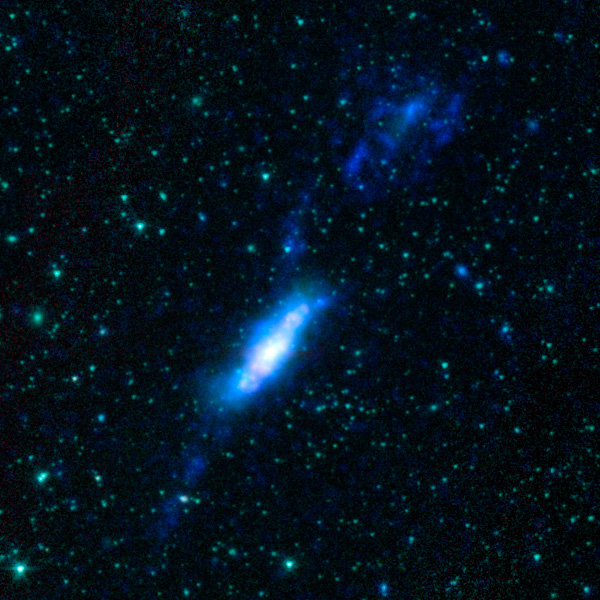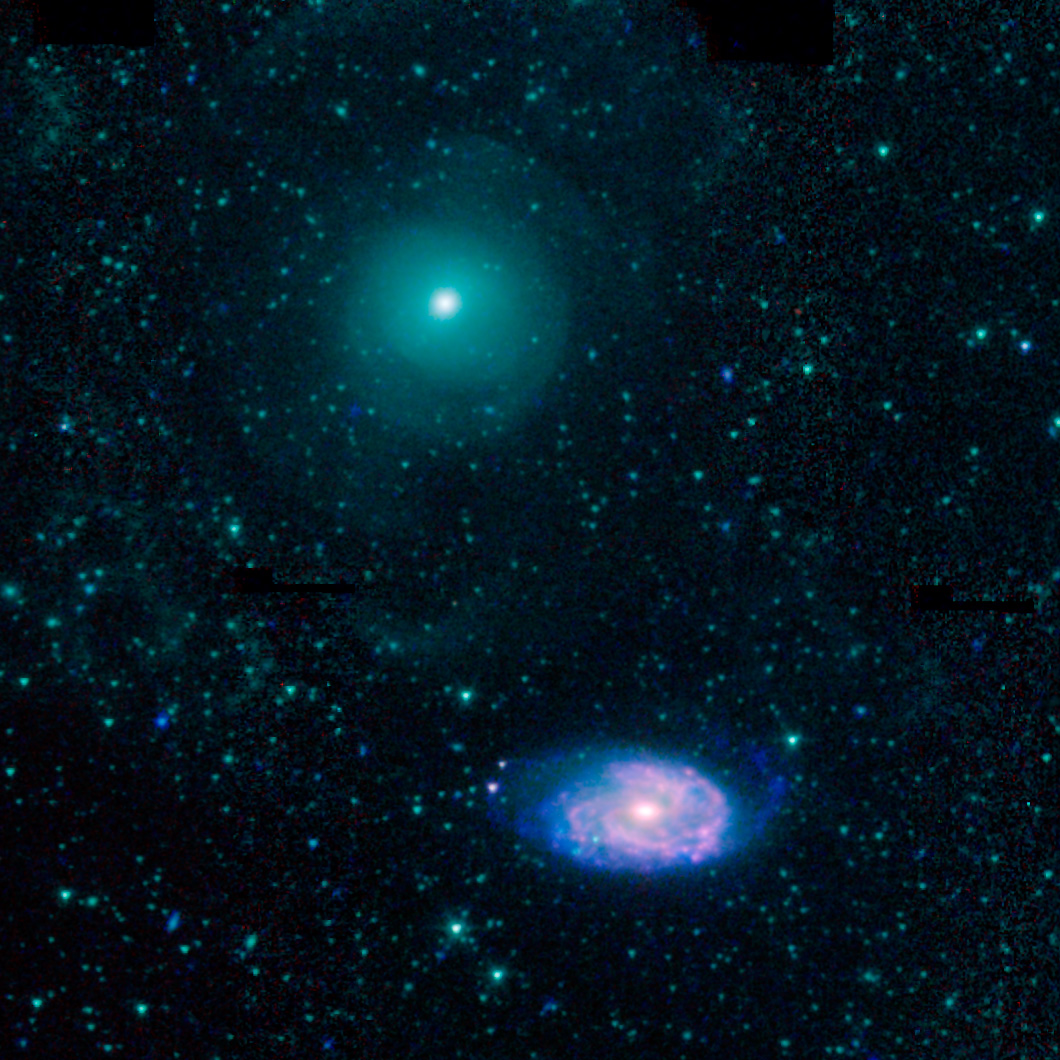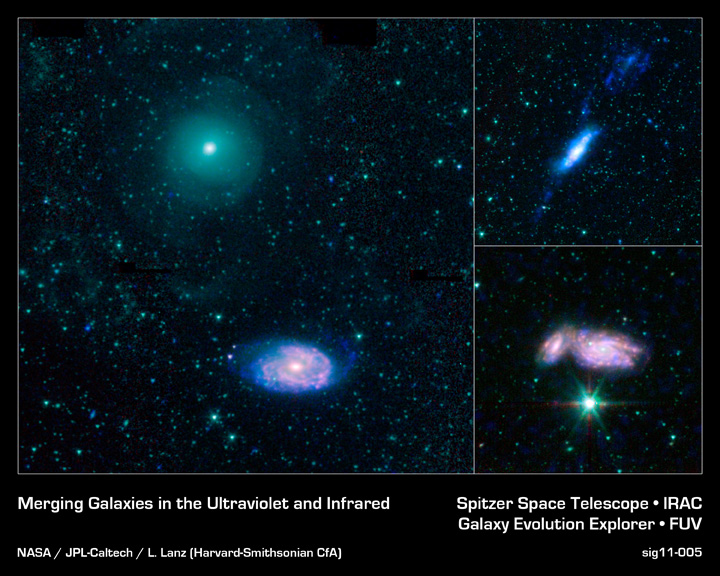Image List
-

Three-color image of NGC 935 and its companion IC 1801 showing far-UV emission from young stars observed by GALEX in blue, heated dust mid-infrared emission observed by Spitzer in red, and stellar near-infrared emission observed by Spitzer in green. This pair of spiral galaxies is beginning to crash into each other.
NASA / JPL-Caltech / L. Lanz (Harvard-Smithsonian CfA) -

Three-color image of NGC 3448 (left) and its companion UGC 6016 (right) showing far-UV emission from young stars observed by GALEX in blue, heated dust mid-infrared emission observed by Spitzer in red, and stellar near-infrared emission observed by Spitzer in green. This pair of galaxies is only separated by 75,000 light-years, and its UV emission shows a bridge of material between the two galaxies.
NASA / JPL-Caltech / L. Lanz (Harvard-Smithsonian CfA) -

Three-color image of NGC 470 (top) and NGC 474 (bottom) showing far-UV emission from young stars observed by GALEX in blue, heated dust mid-infrared emission observed by Spitzer in red, and stellar near-infrared emission observed by Spitzer in green. These galaxies are likely to be on their first pass past each other and are therefore relatively undisturbed at a separation of 160,000 light-years.
NASA / JPL-Caltech / L. Lanz (Harvard-Smithsonian CfA) -

This montage shows three examples of colliding galaxies from a new photo atlas of galactic "train wrecks." The new images combine observations from NASA's Spitzer Space Telescope, which observes infrared light, and NASA's Galaxy Evolution Explorer (GALEX) spacecraft, which observes ultraviolet light. By analyzing information from different parts of the light spectrum, scientists can learn much more than from a single wavelength alone, because they observe different components of a galaxy. The panel at far left shows NGC 470 (top) and NGC 474 (bottom); at top right are NGC 3448 and UGC 6016; at bottom right are NGC 935 and IC 1801. In this representative-color image, far ultraviolet light from GALEX is blue, 3.6-micron light from Spitzer is cyan, 4.5-micron light from Spitzer is green, and red shows light at 5.8 and 8 microns from Spitzer.
NASA / JPL-Caltech / L. Lanz (Harvard-Smithsonian CfA)